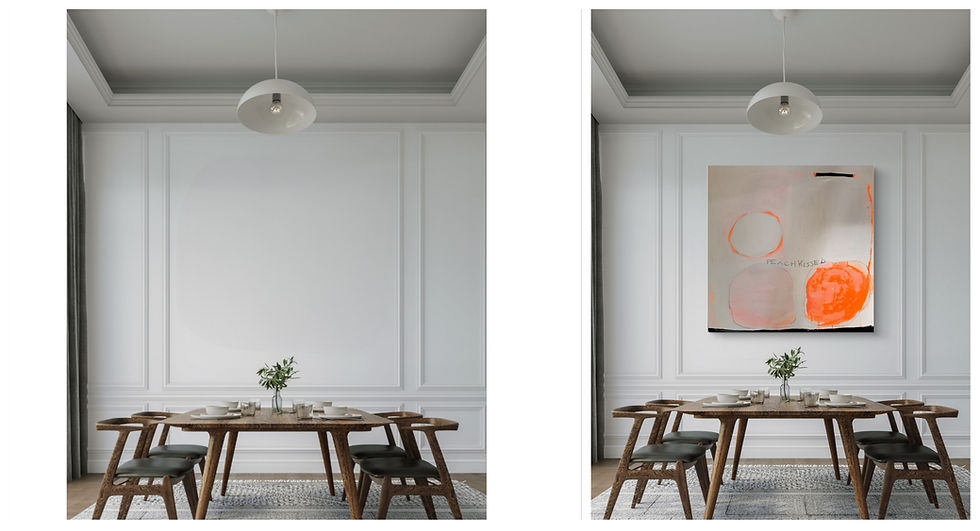What Art and Manifestation Have in Common
- eklat

- May 6
- 3 min read
An artwork rarely appears by chance. It often begins with an internal image, an idea, or a vague feeling that gradually takes shape. Long before the first brushstroke, something has already built up in my mind – a direction, a mood, an intention. This invisible foundation marks the beginning of a creative process that shares many similarities with manifestation.
To manifest means to bring an inner vision into the visible world using focused intention and emotional energy. The same thing happens in the creative process: a vision, impulse, or inner state becomes reality through action and attention – on paper, canvas, or in form.
Beginning with Inner Images and Emotional Connection
For me, the creative process often starts with internal images. These images may not always be clear, but they carry a specific quality – spaciousness, movement, or tension. By connecting emotionally to these images, they gain strength and clarity. From that connection grows the desire to make something visible.
Dr. Joe Dispenza explains that true creative transformation begins with a clear intention paired with strong emotion. This combination activates the brain and puts the body in a state where future experiences can be initiated. In painting, I experience this as a transition from internal image to visible form.
Creativity Requires Calm and Presence
A key condition for both creativity and manifestation is inner calm. When I am not in a stress mode, I can access my creative energy more fully. In states of stillness, presence, and openness, there is space for new ideas and spontaneous decisions to arise naturally.
Dr. James R. Doty highlights the importance of the autonomic nervous system for creativity. When it is in balance, body and mind can enter a coherent state that allows for clarity and intuitive insight. I experience this as moments where I can clearly sense what wants to emerge – and consciously respond to it.
Responding to What Emerges

A central element of my painting process is responding to what is already there. The first layer of paint is usually applied freely and intuitively. Accidental forms, flows, and textures emerge. I observe what appears and let it guide me. This act of response is not passive – it's an active co-creation. It's a dialogue between what appears and what I consciously shape from it.
This closely mirrors manifestation: it’s not just about having a vision, but also being present and open to what shows up in reality – which often looks different than expected. Manifesting requires a willingness to respond to opportunities, impulses, or feedback. Just like I respond to accidents in the painting process, I also respond in life – and make conscious choices from what arises.
The Moment of Action – in Art and in Life
Another key aspect is conscious action. An idea alone doesn’t change anything – not in art and not in life. I have to prepare materials, stretch the canvas, apply paint. Only through concrete steps does the creative process begin. Manifestation is the same: the inner vision needs outer action to take form. Without doing, it remains abstract.
Laura Malina Seiler emphasizes that manifestation is not only about thinking and feeling, but also about taking aligned steps in the real world. Every brushstroke I make is exactly that – a small, intentional step toward turning an inner vision into a real image.
A Glimpse into My Creative Process
“In the beginning, there is a feeling that translates into color. I usually start with flowing paint and allow chance to guide me. Once something resonates, I begin to respond. Shapes, contrasts, clear lines – they arise as conscious responses. I see the process as a translation – from the inner to the outer. The finished piece is a visible manifestation of an experience that previously existed only within me.”
Sources
Dispenza, Joe (2019): Becoming Supernatural. Hay House
Doty, James R. (2016): Into the Magic Shop. Avery Publishing
Seiler, Laura Malina (2022): Zurück zu mir. Rowohlt Polaris


Comments